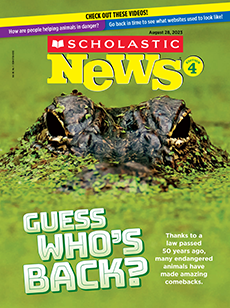1. Based on the article, why do you think Troy Saulsbury has his students re-create a journey along the Oregon Trail?
Based on the article, you can infer that Troy Saulsbury has his students re-create a journey along the Oregon Trail to teach them what life was like for pioneers and learn about this important event from the past. In the article, Saulsbury says, “The Oregon Trail is a big part of our state history.”
(RI.4.1 Inference)
2. How do the authors support the claim that parts of the Oregon Trail were treacherous?
The authors support the claim that parts of the Oregon Trail were treacherous by explaining that the journey involved crossing raging rivers. The article notes, “Since few pioneers could swim, many drowned.” The authors also explain that drinking dirty water along the trail caused many pioneers to get sick with a disease called cholera.
(RI.4.8 Reasons and Evidence)
3. Based on the sidebar, “Another View of the Trail,” describe two ways the Oregon Trail affected the Shoshone Tribe.
One way the Oregon Trail affected the Shoshone Tribe was by eliminating much of their food supply. The sidebar explains that pioneers hunted bison, antelope, and deer. It says that “over time, there was no game for Shoshone to eat.” The travelers on the trail also introduced deadly diseases like smallpox and measles to the Shoshone.
(RI.4.7 Text Features)
